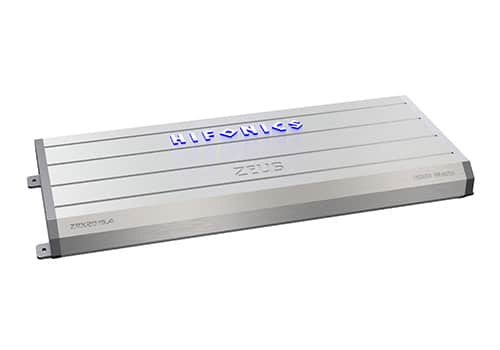Best Car Amplifiers (Tested) – 2025 Buyer’s Guide
- By: Kameron Scott
- Published: October 3, 2017
- Updated: October 16, 2025
Tested by us
How we evaluate: We install amps in real vehicles and test them with common speaker/sub loads. Our focus is clean setup, noise performance in typical installs, feature usability (DSP, crossovers), size/mounting flexibility, and heat behavior in daily use—not just spec sheets.
- Integration & setup: Verify high-level inputs, auto turn-on, remote level controls, and basic gain staging without introducing hiss in high-sensitivity speakers.
- Real-world loudness & control: Listen for dynamics, bass control, and channel balance with music—not sine waves—on 4Ω speakers and typical sub loads.
- Noise & artifacts: Cabin-noise checks (idle hiss, turn-on/off pops) and ground-loop sensitivity with practical wiring.
- Thermals & placement: Spot-check heat buildup during extended listening at moderate/high volume; note cooling needs and enclosure/seat-mount constraints.
- Features & UX: Evaluate crossover ranges, bass boost/Q, and (when present) basic DSP usability and app stability.
- Build & support: Chassis quality, terminals, included hardware, warranty, and track record for reliability.
Disclosure: We don’t publish bench-lab wattage or distortion numbers here. When relevant, we reference manufacturer documentation and trusted third-party measurements, but our picks are based on in-car performance and usability and first hand experience.
In this article: I review my latest top aftermarket car amplifiers by the most common categories—built-in DSP, compact designs, monoblocks and more. I explain why each pick fits its category and share hands-on notes from my installs and testing.
An amplifier is the heart of your car’s stereo. It feeds clean, stable power to your speakers and subwoofer so they can actually perform. Whether you’re powering a couple pairs of my recommended car speakers or a serious car subwoofer, the amp is the link between “it plays” and “it sounds right.”
I’ve seen a lot of factory stereos and even aftermarket head units that leave systems underpowered (even some of my recommended stereos). Peak-watt stickers (e.g., “50W x 4 peak”) aren’t the same as real, continuous power (RMS). Underpowering causes thin, distorted sound and can even contribute to a blown speaker when gains are cranked to over compensate.
My advice: match RMS power and impedance from your amplifier to the speakers and subwoofers you purchase, then let the amplifier do its job. With proper power, headroom and clean gain setup, even stock speakers wake up. A top-rated amplifier is a true necessity in any quality car stereo system.
I grouped my picks by what readers ask me for most. If you’re hunting a very specific use case that’s not covered here, drop a comment at the bottom—I’m happy to point you in the right direction.
Here Are Our Recommended Car Amplifers
Best All Around Car Amplifier Pick
This category is always competitive. When I choose an overall pick, I weigh usable power per chassis size, build/material quality, thermal behavior in tight installs, noise with real vehicles with features you’ll actually use and value. It changes less often than you’d think, but the bar is high—this is my “one line I can recommend to most people” choice today.
JL Audio VXi Series

We test gear and may earn a commission. Buy now clicks are how we make money and support the time we spend making content. This doesn’t affect our picks.
Why I Picked It
VXi gives pro-grade tuning without extra boxes. JL’s NexD2 Class-D platform is efficient and quiet, and the integrated DSP plus TüN™ software is capable of running active fronts and a sub from one chassis with per-channel EQ, time alignment and flexible crossovers – it's amazing. The amps turn on/off cleanly, deal with heat gracefully, and integrate well with factory sources really well. If you want top-tier control and sound quality from a single amp, this is it. For deeper details, see my VXi amplifier overview.
Key Features
Tip: save multiple TüN™ profiles (“daily,” “SQ,” “demo”) so you can switch quickly after break-in or speaker changes.
Some Callout Features
- NexD2 Class-D amplifier
- Onboard DSP
- Advanced Rollback Protection to prevent overheating
- JL Audio TüN™ compatibility for wireless tuning on your smartphone or tablet
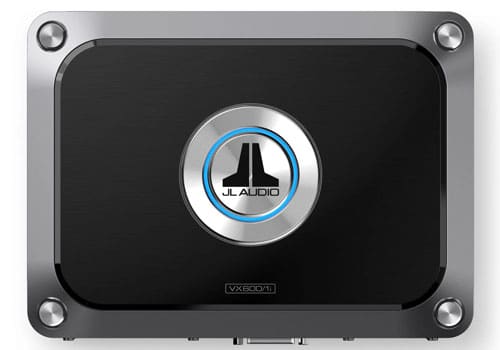
VX600/1i
Amplifier Type: Monoblock
Power Handling: 400W x 1 RMS @ 4Ω
Price Comparison
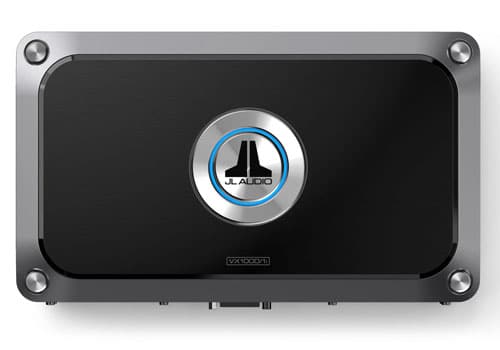
VX1000/1i
Amplifier Type: Monoblock
Power Handling: 600W x 1 RMS @ 4Ω
Price Comparison

VX600/2i
Amplifier Type: 2-Channel
Power Handling: 180W x 2 RMS @ 4Ω
Price Comparison
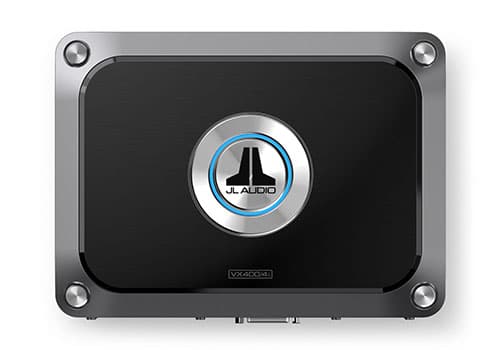
VX400/4i
Amplifier Type: 4-Channel
Power Handling: 75W x 4 RMS @ 4Ω
Price Comparison
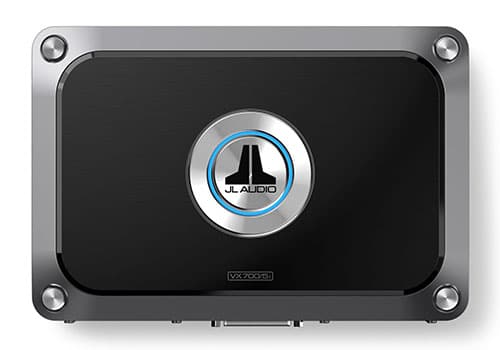
VX700/5i
Amplifier Type: 5–Channel
Power Handling: 75W x 4 + 180W x 1 RMS @ 4Ω
Price Comparison

VX1000/5i
Amplifier Type: 5–Channel
Power Handling: 75W x 4 + 400W x 1 RMS @ 4Ω
Price Comparison
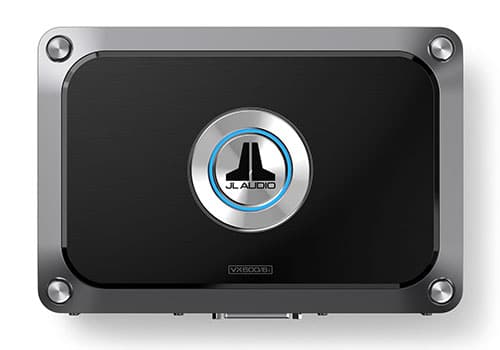
VX600/6i
Amplifier Type: 6-Channel
Power Handling: 75W x 6 RMS @ 4Ω
Price Comparison

VX800/8i
Amplifier Type: 8-Channel
Power Handling: 75W x 8 RMS @ 4Ω
Price Comparison
Best Amplifier With Built-In DSP
Built-in DSP saves space, simplifies wiring, and gives me the tools to fix factory EQ, align staging, and set proper crossovers without adding another box. For this category, I prioritize reliable OEM integration (high-level inputs, summing, signal-sensing turn-on), clean software workflow, and enough output to run a real front stage plus sub.
AudioControl D-Series

Why I Picked It
If you’re keeping the factory head unit or a factory-amplified system, D-Series makes life easy. The active speaker-level inputs and signal summing handle odd factory crossovers, GTO™ (signal-sensing) turn-on reduces the need for a remote lead, and AccuBASS™ restores low end frequencies if the OEM source rolls it off at higher volume. If that sounds confusing to you, it's probably because it is and this amplifier is made to simplify and correct those OEM integrations challenges. The software is straightforward—great for a first DSP experience—yet gives me the control I need for daily SQ: time alignment, flexible crossovers, parametric EQ, and profiles I can save for future tweaks.
To nail the setup, I always set gains with a meter or detector before touching EQ—here’s my SMD DD-1 gain-setting walkthrough. For an OEM-integrated system example (similar process and checks), see my F-150 installation & tuning.
Some Callout Features
- Active speaker-level inputs with signal summing for OEM integration
- AccuBASS™ processing to compensate factory bass roll-off (use only if verified)
- GTO™ signal-sensing turn-on for clean, reliable power-up
- App/software-based time alignment, PEQ, and flexible HPF/LPF
Reasons to Buy
- OEM-friendly: high-level inputs, summing, AccuBASS™ and GTO™ cover most factory systems
- Beginner-friendly DSP workflow with the right controls for daily SQ
- Channel options that make full front stage + sub builds practical
Reasons Not to Buy
- Software UI is practical, not flashy—fewer “advanced” filter options than high-end standalone DSPs
- Chassis size is not as tiny as minimalist non-DSP amps if space is ultra-tight

D-4.800
Amplifier Type: 4-Channel
Power Handling: 125W x 4 RMS @ 4Ω
Price Comparison

D-5.1300
Amplifier Type: 5-Channel
Power Handling: 100W x 4 + 300W x 1 RMS @ 4Ω
Price Comparison

D-6.1200
Amplifier Type: 6-Channel
Power Handling: 125W x 6 RMS @ 4Ω
Price Comparison
Best High Resolution Car Amplifier
“High-res” isn’t a magic badge—it’s about low noise, wide bandwidth, and stable power. So that tiny details and dynamics make it through to your speakers. For this category, I prioritize amplifier topology and control layout that make it easy to build a clean, revealing front stage without adding unnecessary boxes.
Sony Mobile ES Series

Why I Picked It
Mobile ES amps are built like little vaults and deliver clean, wide-band Class-D power with a thoughtful control layout. You don’t get onboard DSP, but Sony gives you flexible input modes, summing and well-spaced filters, which makes dialing in an active or bi-amped front stage straightforward when the rest of your chain is up to it. I unboxed and tested these—see my Mobile ES amplifier review and the XM-6ES/XM-8ES hands-on for measurements, layout, and real-world notes.
Practical tip: plan your filter targets and gains before you start. Set a clean baseline with test tones, then use the amp’s HPF/LPF and level trims to land your crossover points before you chase EQ tweaks.
Sony Mobile ES Amplifier Video Review
Join us for an exclusive unbox and first look at two of Sony's Mobile ES amplifiers in our latest video. We'll walk through the key features that make these amplifiers a great choice.
Some Callout Features
- Refined, wide-band Class-D power with low noise floor
- Flexible input modes and signal routing/summing for easy system building
- Granular, clearly labeled HPF/LPF controls that make active setups approachable
- Solid thermal behavior and reliable protection in tight installs
Reasons to Buy
- Excellent detail retrieval and dynamics when paired with quality sources and treated doors
- Logical controls; easier to dial in than many “feature-heavy” chassis
- Strong reliability from my testing and community feedback
Reasons Not to Buy
- No onboard DSP—add a processor if you want time alignment and advanced EQ
- Footprints aren’t the smallest if your mounting space is ultra-tight
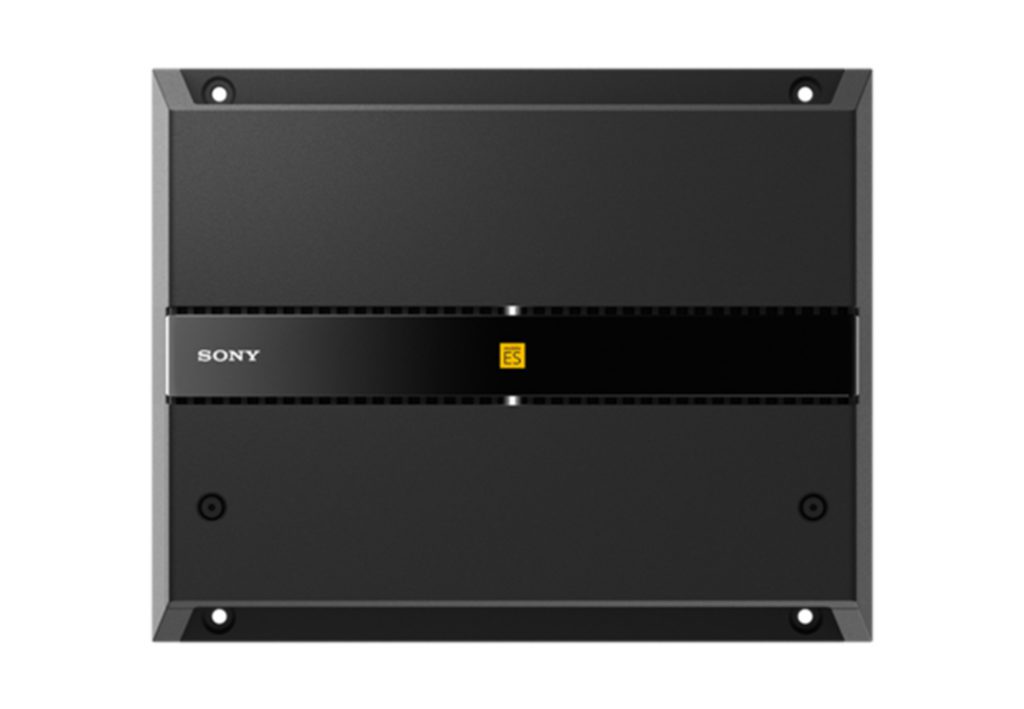
XM-1ES
Amplifier Type: Monoblock
Power Handling: 600W x 1 RMS @ 4Ω
Price Comparison
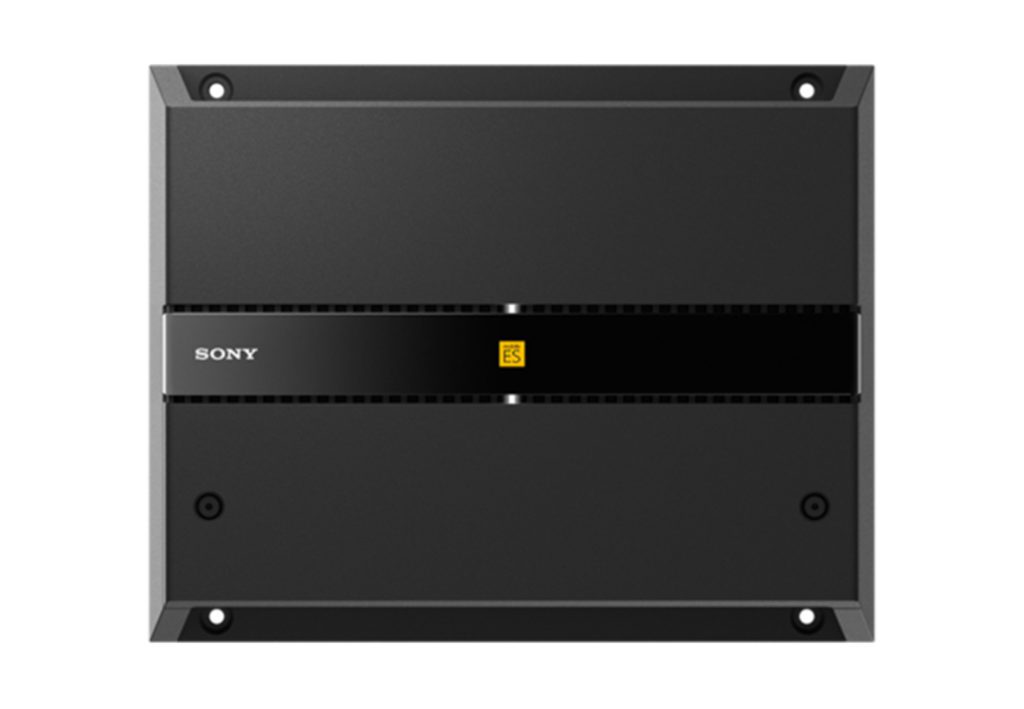
XM-4ES
Amplifier Type: 4-Channel
Power Handling: 100W x 4 RMS @ 4Ω
Price Comparison

XM-5ES
Amplifier Type: 5-Channel
Power Handling: 100W x 4 + 450W x 1 RMS @ 4Ω
Price Comparison
Best Compact & Slim Car Amplifier
When space is tight—or the amp lives in harsher environments—size, mounting flexibility and noise control matter just as much as watts. For this category I prioritize a tiny footprint, clean speaker-level integration, sealed controls, and predictable thermal behavior in under-seat and side-panel installs.
Kicker PXA Series

Why I Picked It
PXA amps are my go-to when I have almost no room but still want a reliable, clean setup. The chassis is purpose-built for tight/hidden installs with weather-resistant construction and a sealed control cover, so once I dial gains and filters they stay protected. Noise performance with speaker-level inputs have been solid in my installs, and the power-to-size ratio makes them easy to recommend for OEM-plus builds, small cabins, and powersports crossovers.
If you’re pairing this with a low-profile enclosure, start here: best shallow subwoofers. And to plan wire runs that fit tight trim, use my wire gauge guide so you don’t choke the amp with undersized power wire.
Some Callout Features
- Ultra-compact, weather-resistant chassis with sealed control cover
- Speaker-level inputs for easy OEM integration
- Straightforward HPF/LPF controls and remote bass level option on sub/5-ch models
- Stable thermal behavior in tight, low-airflow locations
Reasons to Buy
- Tiny footprint—fits under seats, side panels and small cubbies most amps won’t
- Clean, simple tuning; easy to keep noise out of compact installs
- Great one-box solution for OEM-plus builds when space is the constraint
Reasons Not to Buy
- Not the cheapest watts per dollar if you have room for a larger chassis
- Sub channel output is “daily driver” strong, not SPL-focused—pair with efficient enclosures

X502-1
Amplifier Type: Monoblock
Power Handling: 300W x 1 RMS @ 4Ω; 500W x 1 RMS @ 2Ω
Price Comparison
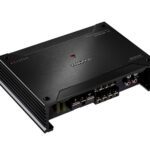
X302-4
Amplifier Type: 4-Channel
Power Handling: 50W x 4 RMS @ 4Ω; 75W x 4 @ 2Ω; 150W x 2 bridged @ 4Ω
Price Comparison
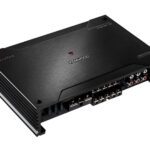
X802-5
Amplifier Type: 5-Channel
Power Handling: 50W x 4 + 300W RMS @ 4Ω; 75W x 4 + 500W RMS @ 2Ω; 150W x 2 bridged @ 4Ω + 500W RMS @ 2Ω
Price Comparison
Best Subwoofer Amplifier
Great bass comes from clean, stable power at the actual impedance you wire your subwoofer for(1Ω/2Ω/4Ω), plus the right filters so the sub works—not struggles. For this category I look at real-world slam per dollar, usable controls (LPF, subsonic, bass boost, remote level), thermal behavior in daily use, and how easily the amp matches common single- and dual-voice-coil subs.
Hifonics ZRX (Zeus)

Why I Picked It
If you want budget-friendly amplifier for loud bass, the Zeus ZRX line covers a ton of ground with straightforward controls and plenty of wattage options. It’s easy to match to a common single 12″/dual 12″ setup whether you’re wiring at 2Ω or 1Ω, and the remote level knob makes day-to-day adjustments simple. This isn’t my “ultra-low-noise SQ” choice, but for daily bass that hits hard without a premium price tag, ZRX delivers.
Set yourself up for success: decide on your enclosure and wiring first, then pick the ZRX model that gives you the right RMS at your final impedance. My quick guides will help you avoid clipping and mismatches—start with 5-Channel vs. Separate Amps and my DD-1 gain-setting walkthrough.
Some Callout Features
- Wide model range with mono and multi-channel options to match common sub/enclosure builds
- Variable LPF and subsonic filters, bass boost, and remote level control for quick tuning
- Straightforward setup and protection behavior suitable for daily-driver systems
Reasons to Buy
- Tiny footprint—fits under seats, side panels and small cubbies most amps won’t
- Clean, simple tuning; easy to keep noise out of compact installs
- Great one-box solution for OEM-plus builds when space is the constraint
Reasons Not to Buy
- Not the cheapest watts per dollar if you have room for a larger chassis
- Sub channel output is “daily driver” strong, not SPL-focused—pair with efficient enclosures
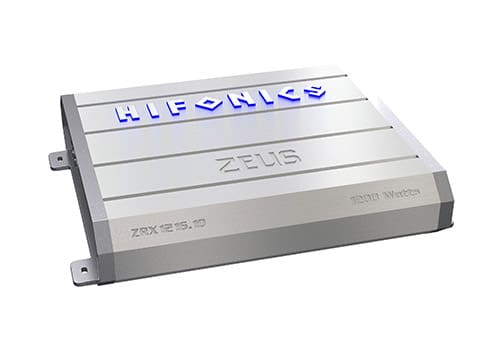
ZRX1216.1D
Amplifier Type: Monoblock
Power Handling: 200W x 1 RMS @ 4Ω
Price Comparison

ZRX1816.1D
Amplifier Type: Monoblock
Power Handling: 500W x 1 RMS @ 4Ω
Price Comparison
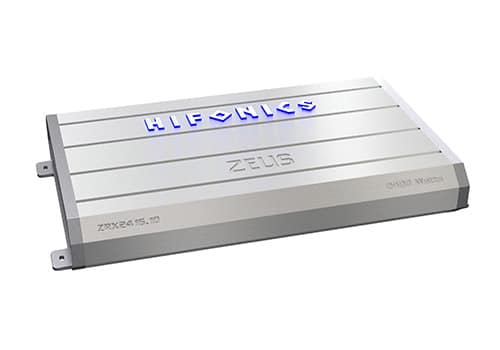
ZRX2416.1D
Amplifier Type: Monoblock
Power Handling: 500W x 1 RMS @ 4Ω
Price Comparison
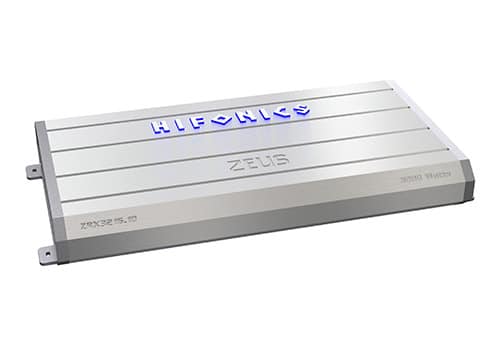
ZRX3216.1D
Amplifier Type: Monoblock
Power Handling: 800W x 1 RMS @ 4Ω
Price Comparison
Best Factory/OEM Upgrade Amplifier Kit
Modern infotainment systems lock in a lot—chimes, safety alerts, vehicle settings—so ripping out the radio isn’t ideal. My cleanest path is replacing the factory amp while keeping all those features intact. For this category I prioritize feature retention, low-noise OEM integration, app-based tuning you’ll actually use, and enough output to power a real front stage plus a sub.
Kenwood XR600 + iDataLink Maestro AR OEM Replacement Amplifier

Why I Picked It
This combo gives me the most OEM-clean upgrade path I’ve used. The Maestro AR talks to the vehicle over data, so I keep balance/fade, factory alerts and steering controls while the Kenwood XR600-6DSP provides real power and per-channel tuning. It’s minimally invasive, sounds dramatically better than the stock amp, and the app makes post-install tweaks painless.
Before buying, confirm AR compatibility for your exact year/trim. For process and tuning checkpoints, my OEM-integrated F-150 installation & tuning lays out the steps I follow, and this amp wiring guide will help you plan grounds, fusing and runs the right way.
Key Features
- Feature retention (balance/fade, vehicle alerts) via Maestro AR data integration
- Kenwood XR600-6DSP power with per-channel EQ, time alignment and flexible crossovers
- App-based tuning for quick adjustments after install and speaker break-in
- Clean turn-on/off behavior and low noise floor in OEM environments
Reasons to Buy
- Keeps factory UI/chimes while delivering a real power and quality upgrade
- Less invasive than replacing the head unit in many 2015+ vehicles
- Profiles you can save/swap make dialing in daily vs. demo listening easy
Reasons Not to Buy
- Requires a compatible vehicle and the Maestro AR module/harness
- Not as flexible if you’re planning a heavily custom, competition-style system down the road
Wrapping Up
At the end of the day, choosing the amp that matches the system you actually want to end up with is the most important part. If you need onboard processing and clean OEM integration, I point people to JL VXi or AudioControl D-Series. Building a revealing front stage and care about micro-detail? Sony Mobile ES is a great match – I run them in my vpersonal vehicle. Tight mounting spaces or mixed-use vehicles? Kicker PXA makes compact installs painless. Want budget-friendly slam for daily listening? Hifonics ZRX is the value pick. Keeping your factory screen and features intact? Kenwood XR600 with Maestro AR is the cleanest path I’ve used.
No matter which way you go, match RMS power to your speakers/subs and their final impedance, set gains with a repeatable method, and double-check fusing and grounds. Do that, and the system stays dynamic, reliable and easy to live with.
Next steps: How to choose the right amplifier · Tune your amp (quick guide) · Plan wiring, fusing and grounds.
Why Trust Our Opinion on Car Amplifiers?
CarAudioNow is an award winning automotive blog, founded and built from the ground up by car enthusiasts over a decade ago. Between our editor, Kameron, and a few selected qualified writers, we’ve installed and tested a wide variety of car amplifiers in cars or our test bench in person. We know our amps, how they should sound and perform at high volume, what type of tuning and control features they should have (like a built-in DSP). But we also know what’s a good value for your dollar. We get our hands on every product that we test in person too – many of which are purchased and some provided by a manufacturer. Its a combination of these tests and extensive research that lead us to our recommendations though. And we’re frequently testing new amplifiers for our lists.
CarAudioNow and its writers also don’t use AI to throw regurgitated information about a few car amplifiers on a list and say they’re “the best” or “our top pick”. We’re focused on providing meaningful lists, with accurate and practical info that will help you make an informed decision. We do this because we genuinely enjoy or highly regard the products we add to our lists. Our readers and our reputation are both more important to us than a quick buck or our ranking on Google – although both of those would be nice! Read more about how we choose our top lists here.



